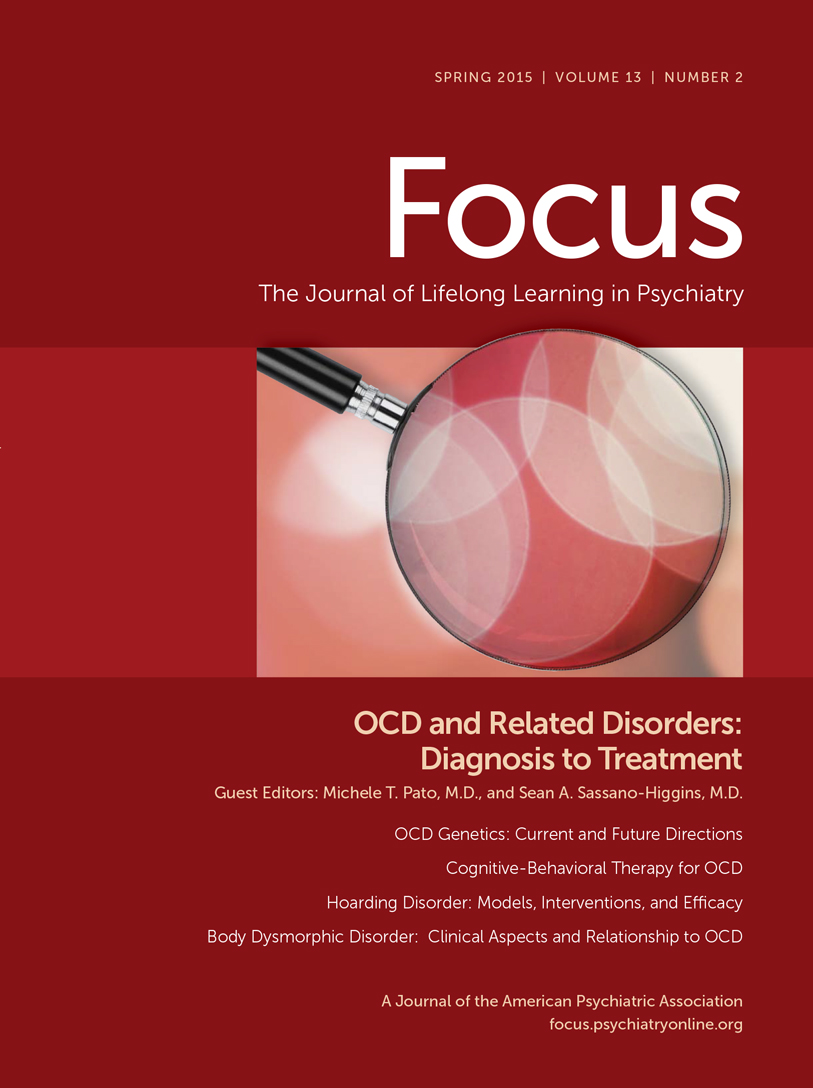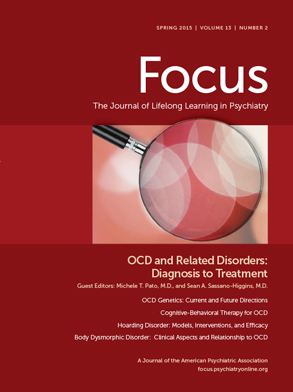Trichotillomania and Skin-Picking Disorder: Different Kinds of OCD
Abstract
Clinical Context
Trichotillomania
Skin-Picking Disorder
Common Characteristics
Symptoms.
Neurobiology.
Psychological theories of etiology.
Treatment Strategies and Evidence
Diagnosis
| Misdiagnosis | Reasons for and Prevention of Misdiagnosis |
|---|---|
| Obsessive-compulsive disorder (OCD) | Trichotillomania and skin picking are often misdiagnosed as OCD because they involve compulsive behaviors. However, trichotillomania and skin picking generally lack significant obsessional thoughts and do not appear to respond to traditional OCD treatments. |
| Anxiety disorder | Many clinicians assume that trichotillomania and skin picking are merely manifestations of anxiety (i.e., nervous habits). Although anxiety may worsen pulling and picking, the behaviors persist even when no anxiety is present. |
| Stimulant addiction | It is not uncommon for individuals who use stimulants, whether illicitly or by prescription, to report skin picking or possibly worsening of hair pulling. |
| Body dysmorphic disorder (BDD) | BDD is characterized by obsessions about and preoccupation with a perceived defect of one’s physical appearance. In BDD, individuals may pull hair with the aim of correcting a perceived defect of their appearance (e.g., “I know that my arms are too hairy and disgusting to people”) or pick their skin to improve their appearance. |
| Self-injurious behavior | Hair pulling and skin picking are not the same as self-injury. Pulling and picking are often used as a means of correcting a problem with the hair or skin and are not generated from the complex psychological factors that give rise to self-injury, such as cutting behavior. |
Psychotherapy
Pharmacotherapy
Sequencing Treatment
Treatment of Comorbidities
Prognosis
Questions and Controversy
Recommendations
References
Information & Authors
Information
Published In
History
Authors
Funding Information
Metrics & Citations
Metrics
Citations
Export Citations
If you have the appropriate software installed, you can download article citation data to the citation manager of your choice. Simply select your manager software from the list below and click Download.
For more information or tips please see 'Downloading to a citation manager' in the Help menu.
View Options
View options
PDF/EPUB
View PDF/EPUBLogin options
Already a subscriber? Access your subscription through your login credentials or your institution for full access to this article.
Personal login Institutional Login Open Athens loginNot a subscriber?
PsychiatryOnline subscription options offer access to the DSM-5-TR® library, books, journals, CME, and patient resources. This all-in-one virtual library provides psychiatrists and mental health professionals with key resources for diagnosis, treatment, research, and professional development.
Need more help? PsychiatryOnline Customer Service may be reached by emailing [email protected] or by calling 800-368-5777 (in the U.S.) or 703-907-7322 (outside the U.S.).

